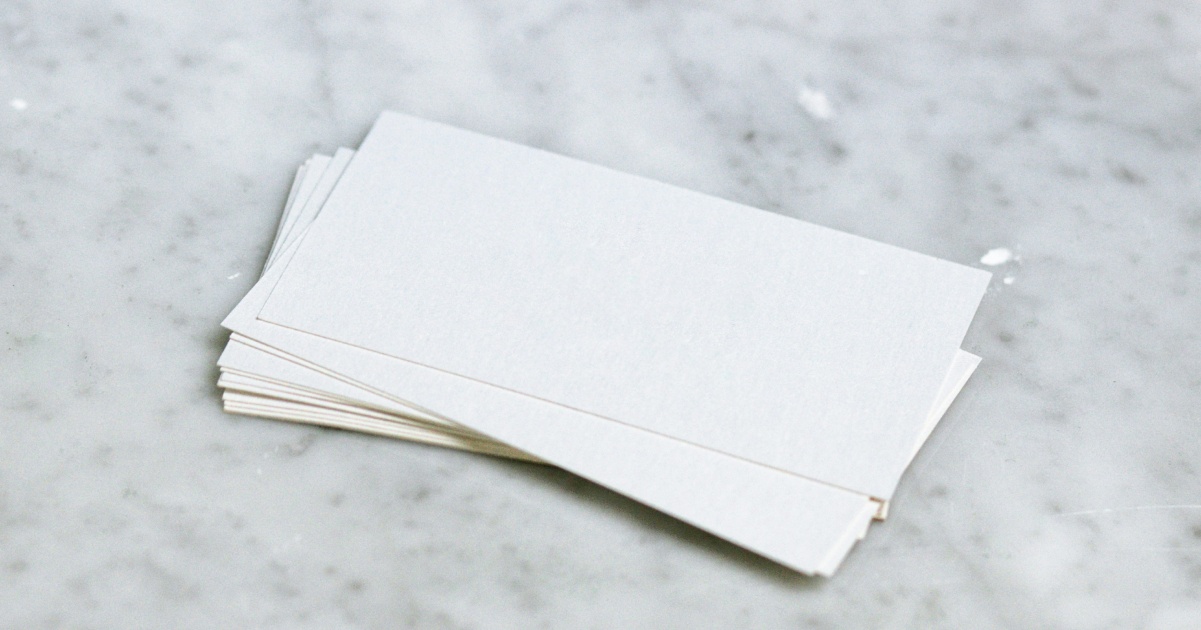
What to Put on a Business Card as a Freelancer
Understanding what to put on a business card is essential for any freelancer looking to make a lasting impression. A well-designed business card can open doors to new opportunities, help establish your brand, and ensure potential clients remember you.
In this guide, we’ll walk you through everything you need to know about creating an effective business card as a freelancer.
What Is a Business Card?
A small, printed business card typically includes your name, contact information, and key business details. The average US business card is 3.5″ x 2.0″. The UK dimensions are 3.35″ x 2.17″.
The card serves as a handy reference for anyone who wants to get in touch with you. Despite its small size, a business card can convey a lot about who you are and what you do, making it a crucial tool for networking and personal branding.
Business cards can be designed DIY-style online rather than going to a traditional office supply retailer. Many freelancers use services such as Vistaprint to design their perfect business card.
Are Business Cards Still Relevant?
You might wonder if business cards are still necessary in an increasingly digital world. The answer is a resounding yes. Here are some reasons why business cards remain relevant for freelancers:
- Personal Touch: Exchanging business cards creates a personal connection that digital interactions often lack. Many professionals value physically grasping a business card after you happily say, “My card!” Clients from Asian countries such as South Korea or Japan strongly value business card exchanges. Having one for such clients is a bonus!
- Professionalism: A well-crafted business card signals professionalism and attention to detail. For example, you might have a business card with eye-catching colors and a glossy feel.
- Convenience: Business cards are easy to carry and distribute at networking events, meetings, and conferences.
- Branding: They provide a tangible representation of your brand, making you memorable to potential clients.
What Should a Business Card Include?
When designing a business card, it’s important to include key information that makes it easy for clients to understand your services and get in touch with you. Here’s a list of essential elements:
- Your company name: Your company name should be the largest piece of text on your business card. It’s an essential part of establishing your brand identity, alongside your logo.
- Logo: If you don’t have a logo, beginner-friendly tools like Canva can help you create a unique one that clearly represents your services. Your logo should go on the front of your business card (with some white space around it to avoid a cramped appearance).
- Your Name: Adding your full name can help create a personal connection. Use the name you go by professionally. For example, if your nickname is Mike, it’s best to use Michael on the business card.
- Job Title: Clearly state your role or the services you offer.
- Contact Information: Include your phone number and email address.
- Website: If you have a professional website or online portfolio, include the URL. (Note: There’s no need to include the http:// part of the URL).
- Social Media Handles: Add relevant social media profiles such as LinkedIn, Instagram, or TikTok, especially if they showcase your work.
- Tagline or Brief Description: A short, memorable tagline can help explain what you do. For example, if you’re a content writer, your tagline could be Crafting Words That Captivate and Convert. Alternatively Polishing Your Words to Perfection would make a good brief description for a freelance editor.
How to Design a Business Card
Here are some tips to help you create an effective and attractive business card:
1. Look for Inspiration
If you’re unsure where to begin, it’s a good idea to look at how other freelancers (particularly those in your industry) design their business cards. Here are some freelance business card examples to get you started.
2. Have a Clear Brand Identity
Your business card should reflect your brand’s visual identity. If you already have a website, your business card should use the same colors, fonts, and overall style. Let’s look at a few examples:
- This business card, from designer Emily Burchill, has a classic, contemporary look. Her logo is front and center, with a bold serif font used for the text. The color scheme compliments that of her website and subtly reflects her work in the wedding industry.
- These business cards for the founder of the vegan food and lifestyle blog, Veganced, are very elegant and minimal. The cream and sage green color scheme is designed to pair well with the bright and bold photography style used on the website.
- Photographer Spencer Lowell’s business cards capture his work’s essence, blurring the lines between art and science. They are minimal, bold, and futuristic – just like his website.
3. Pick a Readable Font Size and Style
As business cards are small, you can only fit so much on them. That’s why you should use a font size that is easy to read, typically between 10–12 points for the main text. Use bold text sparingly. It’s best to only put your name in bold on the card.
4. Use Quality Materials
Choose a good quality cardstock that feels substantial and durable. Some freelancers opt for a glossy texture; however, such texture tends to be pricey. A standard finish will do if the paper is high-quality.
5. Remember to Add Whitespace
Don’t overcrowd your card. Use whitespace to make it look clean, readable, and professional. We recommend using one side of the card for your logo and the other for your name and contact information. Having one side for the contact details will optimize whitespace. We also recommend using a double-space style for your contact details for optimized readability.
Example:
Joe Blo
Tax Consultant
joeblo@somethingsomething.com
6. Consider Including a QR Code
We recommend adding a QR Code to your card. This allows clients to scan your contact details onto their mobile devices. It’s best to have the QR Code on the top right-hand corner of the card.
Wondering if adding a QR Code is difficult? The same online business card developing software platforms can add a code onto the card, simplifying the process. Although having a code isn’t mandatory, it makes a nice extra touch.
7. Make Sure It’s Legible
Stick to simple fonts and avoid using too many different styles. For example, if you choose Times New Roman for the text, keep it consistent throughout. As for colors, we recommend not going overboard and turning the card into a rainbow. We suggest using three colors for contact details. For example, use red for your name, gray for your job title, and black for contact information. This style works best if the background is white. Prospective clients will be able to read the card easily.
8. Use Design Software
Use professional design software or hire a designer to improve your card. As previously mentioned, Vistaprint is a good online tool with reasonable rates for standard business cards. Depending on the need for cards, you can have cards designed and delivered to your home within a few weeks. It’s a good idea to start designing cards at least one month before an important networking event so you’ll have them in time. Canva is another good-quality platform for designing cards, and it (as well as Vistaprint) can help add a QR code to your card.
9. Proofread the Card
Even though the typical business card word count isn’t much, you must proofread the text for typos or errors before printing. You wouldn’t want to hand a business card with a typo to a potential client!
Becoming a Freelancer
Do you dream of escaping the 9–5 grind and becoming a freelancer? Consider our comprehensive course, Becoming A Freelancer. It’s the ultimate guide to setting up a freelancing business from scratch. You’ll learn how to set up your ideal freelance business, find prospective clients, and much more! We offer free lessons for this course.





Your email address will not be published.